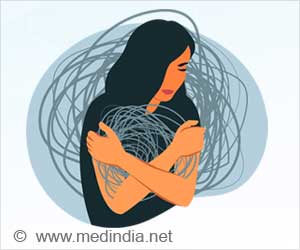Suicide barriers erected on bridges might not reduce overall suicide rates by jumping from heights, because people may change location for their suicide attempt, a new study found.
Canadian researchers found that the overall suicide rate (by any means) in Toronto reduced after a barrier was erected at one particular bridge known for a high suicide rate, but suicides from jumping remained the same.Restricting peoples' access to a means of suicide can delay and prevent suicide such as in the UK where switching to carbon monoxide-free sources of gas was successful in reducing suicide numbers.
Suicide barriers erected to prevent jumping have been established at the Empire State Building in the USA, the Eiffel Tower in France, and bridges worldwide.
However, not study so far has shown that a suicide barrier has led to a statistically significant drop in overall suicide rates in an area.
Researchers from Toronto studied the impact of the erection of a suicide barrier at the Bloor Street Viaduct, the bridge with the world's second highest annual rate of suicide by jumping after Golden Gate Bridge in San Francisco.
The barrier was constructed between April 2002 and June 2003.
Advertisement
The researchers studied data covering all suicides in Ontario during the period 1 January 1993 to 30 June 2007.
Advertisement
Results showed that suicide deaths at the Bloor Street Viaduct fell from 9.3 per year before the barrier to zero after it was constructed.
However, there was no impact on suicide by jumping in the region as a whole.
Toronto's overall yearly suicide rate by jumping was almost unchanged when comparing the pre and post barrier periods at 56.4 per year compared to 56.6 per year.
It was also noted that, post-barrier in Toronto, there was a statistically significant increase in suicides by jumping from bridges other than the Bloor Street Viaduct (8.7 suicide rate per year rising to 14.2 per year).
There was, however, a decrease in both the overall rate of suicides in Toronto and the rate of suicides by means other than jumping in the post-barrier period.
"This research shows that constructing a barrier on a bridge with a high rate of suicide by jumping is likely to reduce or eliminate suicides at that bridge but it may not alter absolute suicide rates by jumping when there are comparable bridges nearby," the BMJ quoted the researchers as concluding.
"This study reminds us that means restriction may not work everywhere, and that we have much to learn about the determinants of the choice of method in suicidal acts," writes David Gunnell from the University of Bristol and Matthew Miller from Harvard School of Public Health, in an accompanying editorial.
"Yet, where and when means restriction works, it may save more lives than other suicide prevention strategies, especially in children and young adults, who tend to act impulsively in fleeting suicidal crisis," they added.
The study has been published on bmj.com.
Source-ANI









